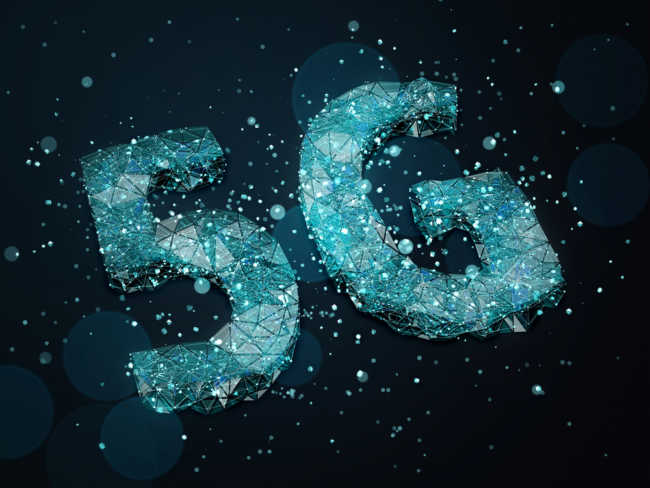Benefits of 5G can usher in a new era for Industrial IoT – and maybe new taxes, too
With the long-anticipated roll-out of 5G, there are high expectations for the potential impact of new technologies and business models enabled by these networks. The advent of 5G brings multiple advantages, including greater speed to move more data, lower latency to reduce delays, and the ability to connect more devices. In particular, the industrial IoT (IIoT) and manufacturing industries are key drivers for innovation using 5G-enabled technology, leading to advanced monitoring and predicting capabilities that will help streamline supply chain, flow of product, safety, and more.
Combining the capabilities of 5G with the application of technologies such as sensors, machine learning (ML), artificial intelligence (AI), and augmented reality (AR) in the field of IIoT will create opportunities to take businesses to the next level. For example, sensors in a factory can relay real-time data to remote managers or service techs to notify them of a problem before it escalates. AR can be utilized to dig deeper into alerts, diagnosing and remediating concerns without downtime. Predictive analysis using ML/AI can provide recommendations and make improvements to recurring issues, increasing efficiency and saving expenses. However, as all this data is communicated across networks, building a logistical ecosystem of intelligence, there is another potential impact that must be considered: Is this use of IoT subject to communications tax?
With more and more devices able to communicate vast amounts of data, it’s critical to be aware of any possible communications tax implications that could arise as a result. Whether a service is subject to communications tax is based on use case and not limited to businesses in the telecom industry, so it’s imperative to understand if your particular use is taxable or not. Due to the benefits of 5G’s high reliability and security, industrial facilities will be among the major users of private 5G networks, making it a priority for them to know what to look out for when implementing new technologies and business models. Uncover most common 5G Myths and Realities in one of our previous article.
With this ultra-reliable low-latency communication (URLLC), 5G enables time-critical process control and optimization in industrial environments not possible with today’s cellular technology. This introduces new business operating models, such as implementing more IoT-connected automated devices that relay data in real-time to create more efficiency and accuracy. These new operating models for IIoT businesses may have a communications element that could be subject to new tax implications. Identifying when communications tax could apply to specific use cases will be important to avoid surprises and unexpected tax liabilities.
It helps to start with awareness of what influencing factors might trigger the application of communications tax. If you are using technology such as sensors, AI, VR, or AR to send data across the internet and manage your IIoT operations, in many cases communications tax might be required, but many other factors also go into making that determination.
In addition to implications through technology, changes in legislation can also impact when and how communications tax is applied. Taxing authorities work to keep up with shifting business models and the technology that drives them. However, innovation moves faster than they can, so communications tax law has been known to change suddenly and drastically to try to catch up. With a rapidly changing landscape and highly nuanced distinctions, relying on trusted resources and up-to-date data can help you navigate the complexity.
The tremendous benefits 5G brings to IIoT are touted by some as leading to the fourth industrial revolution, after steam, mechanization and computerization. With any massive change of this scale, the ripple effects will be far-reaching and are yet to be defined – including the tax implications, which are complex and still unclear. To stay prepared for potential taxability scenarios, it’s helpful to understand how your particular use case might be impacted by being familiar with when and how communications tax applies to IoT. Keeping up to date on changes in legislation, and relying on your trusted tax professionals can help you reduce risk and minimize surprises.
![]() This article was written by Tony Susak. He joined Avalara in March 2017 as the general manager of Avalara’s Communications Business Unit. Prior to joining Avalara, he served as the director of tax for AT&T, where his team had responsibility for calculating, filing and remitting millions of dollars annually across every jurisdiction in the United States and many jurisdictions abroad. Prior to AT&T, Susak held similar positions with Cricket Communications, Cingular Wireless, Virgin Mobile and General Motors’ OnStar division. In these roles, he also helped to develop policy and influence legislation involving vehicle telematics and communication taxes. Susak holds an MBA with Distinction from the Keller Graduate School of Management and a Bachelor of Science degree in accounting from Indiana State University. He is a member of the American College of Forensic Examiners.
This article was written by Tony Susak. He joined Avalara in March 2017 as the general manager of Avalara’s Communications Business Unit. Prior to joining Avalara, he served as the director of tax for AT&T, where his team had responsibility for calculating, filing and remitting millions of dollars annually across every jurisdiction in the United States and many jurisdictions abroad. Prior to AT&T, Susak held similar positions with Cricket Communications, Cingular Wireless, Virgin Mobile and General Motors’ OnStar division. In these roles, he also helped to develop policy and influence legislation involving vehicle telematics and communication taxes. Susak holds an MBA with Distinction from the Keller Graduate School of Management and a Bachelor of Science degree in accounting from Indiana State University. He is a member of the American College of Forensic Examiners.
